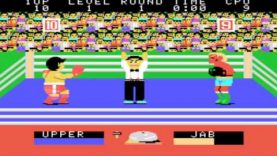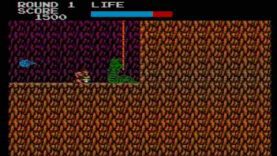Let’s Compare ( Double Dragon ) Part 2 of 2
Gaming History Source
Let’s compare ( Double Dragon )
In this video we’ll be comparing 14 versions of Double Dragon
1. Arcade
2. Atari 2600
3. Atari 7800
4. Amstrad CPC
5. Commodore 64
6. Game Gear
7. Gameboy
8. Nintendo Entertainment System
9. Sega Master System
10. Amega
11. Atari Lynx
12. Sega Genesis
13. Gameboy advance
14. Super Nintendo
Description Source:
http://en.wikipedia.org/wiki/Double_Dragon
Double Dragon is a 1987 beat ’em up developed by Technos Japan and distributed in North America and Europe by Taito Corporation. The game is a spiritual and technological successor to Technos’ earlier beat ’em up, Nekketsu Kōha Kunio-kun (released outside of Japan by Taito as Renegade), but introduced several additions such as two-player cooperative gameplay and the ability to arm oneself with an enemy’s weapon after disarming them. Double Dragon is considered to be one of the first successful examples of the genre, resulting in the creation of two arcade sequels and several spinoffs, as well as inspiring other companies in creating their own beat ’em ups.
Home versions of the game were released for the Nintendo Entertainment System, Sega Master System, Atari 2600, Atari 7800, Game Boy, Genesis/Mega Drive and Atari Lynx, among other platforms during the series’ height of popularity. A remake titled Double Dragon Advance was released for the Game Boy Advance in 2004. The NES version was re-released for the Wii’s Virtual Console in North America on April 28, 2008 at a cost of 500 Wii Points.
The player takes control of martial artist Billy Lee, or his twin brother Jimmy (also known as Hammer and Spike in the supplementary materials for the American arcade release), as they fight their way into the turf of the Black Warriors gang in order to rescue their common love interest Marian. The player character has a repertoire of martial art techniques which they can perform by using the joystick and three action buttons (kick, jump, and punch) individually or in combination. Techniques ranges from basic punches and kicks, to more elaborate maneuvers like hair grabbing moves or elbow punches. When playing with another player, one can assist the other by grabbing their partner’s opponent from behind. The player begins the game with a certain number of extra lives and a life gauge which depletes as the player takes hits from enemies. If the life gauge runs out or the time limit reaches zero, the player will lose a life.
There is a small variety of enemy characters that the player will face thorough the course of the game. Certain enemies will carry a melee weapon which the player can use by disarming the enemy carrying it and then retrieving the item from the floor. The available weapons includes steel bats, whips, throwing knives, and dynamite sticks, as well as large objects such as cardboard boxes, oil drums, and rocks, which the player can lift and throw at enemies or kick it towards incoming ones.
The game is divided into four different stages or “missions”, which consist of a city slum, a factory, the woods, and the hideout of the boss. The game normally ends if a single player defeats the final boss alone. However, if two players manage to complete the game together then the two will be forced to fight each other in order to determine who will win Marian’s affections.













